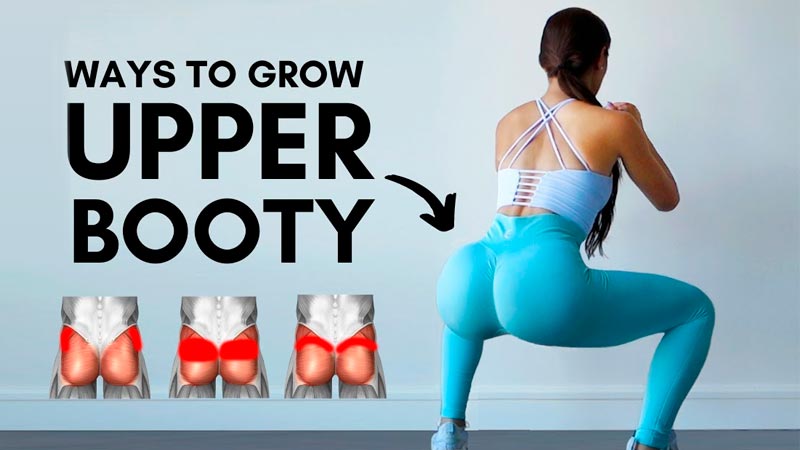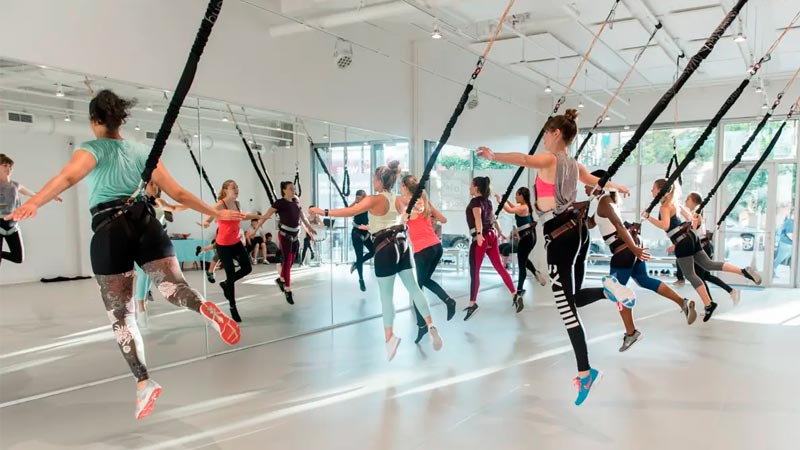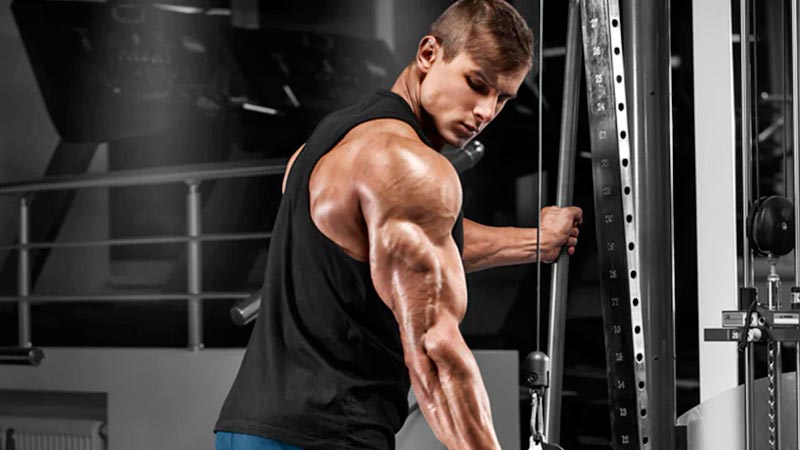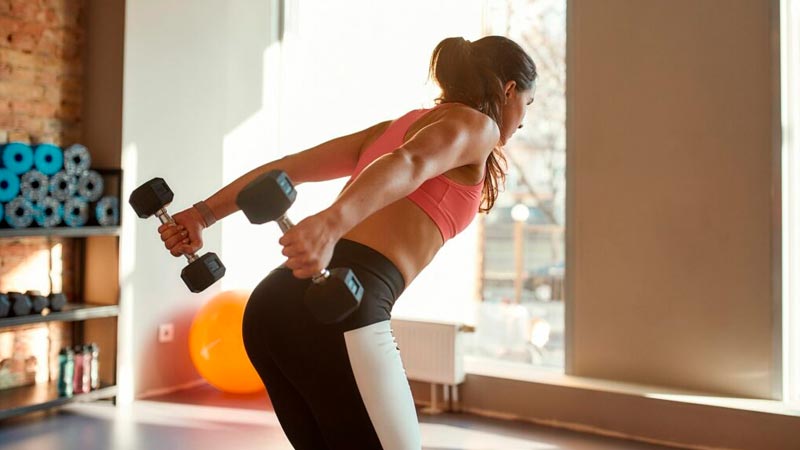Upper glute exercises are an essential part of any lower body workout routine. The glutes are the largest muscle group in the body, and the upper glutes, in particular, play a crucial role in hip extension and stabilization.
Table of Contents
Strong upper glutes not only improve athletic performance but also help prevent injuries and promote good posture.
Some effective upper glute exercises include hip thrusts, glute bridges, and cable pull-throughs. These exercises target the glutes from different angles and can be easily modified to increase or decrease the intensity.
It is important to perform these exercises with proper form to ensure maximum activation of the glutes and prevent injury. Incorporating these exercises into a regular workout routine can help individuals achieve a well-rounded lower body workout and improve overall fitness.
Understanding the Upper Glutes
The upper glutes, also known as the gluteus medius, are a group of muscles located on the outer surface of the pelvis. These muscles play an essential role in stabilizing the pelvis and maintaining balance during activities such as walking, running, and jumping.
The gluteus medius consists of three parts: anterior, middle, and posterior. The anterior fibers of the muscle originate from the anterior iliac crest, while the middle fibers originate from the lateral surface of the ilium. The posterior fibers originate from the posterior iliac crest. All three parts converge to insert into the greater trochanter of the femur.
Weakness or dysfunction of the gluteus medius can lead to a variety of problems, such as hip pain, low back pain, and poor balance. Therefore, it is essential to incorporate exercises that target the upper glutes into your workout routine.
Some effective exercises for the upper glutes include:
- Side-lying leg lifts
- Clamshells
- Lateral band walks
- Single-leg squats
- Step-ups
It is important to note that the gluteus medius is not the only muscle that contributes to hip stability and balance. Other muscles, such as the gluteus maximus and the tensor fasciae latae, also play a role. Therefore, it is essential to incorporate exercises that target all of these muscles to maintain optimal hip function.
In summary, the upper glutes, or gluteus medius, are a group of muscles that play a crucial role in hip stability and balance. Incorporating exercises that target these muscles into your workout routine can help prevent injury and improve overall hip function.
Importance of Upper Glute Exercises
The glutes are one of the largest muscle groups in the body, and they play an important role in many movements, including walking, running, and jumping. However, many people neglect their upper glutes, which can lead to imbalances and weaknesses in the lower back, hips, and knees.
Upper glute exercises can help to strengthen this important muscle group, improve posture, and reduce the risk of injury. Here are a few reasons why upper glute exercises are important:
1. Improved Posture
Weak upper glutes can lead to poor posture, which can cause a range of problems, including back pain, neck pain, and headaches. By strengthening the upper glutes, you can improve your posture and reduce the risk of these issues.
2. Reduced Risk of Injury
Strong upper glutes can help to stabilize the hips and pelvis, which can reduce the risk of injury to the lower back, hips, and knees. This is especially important for athletes who engage in activities that place a lot of stress on these areas.
3. Better Athletic Performance
The upper glutes play an important role in many athletic movements, including sprinting, jumping, and changing direction. By strengthening this muscle group, athletes can improve their performance in these activities.
4. Improved Aesthetics
Finally, upper glute exercises can help to improve the appearance of the glutes, which is a common goal for many people. By targeting the upper glutes, you can create a more rounded, lifted look that is often associated with a fit and healthy body.
Overall, upper glute exercises are an important part of any fitness routine. By strengthening this muscle group, you can improve your posture, reduce the risk of injury, enhance athletic performance, and improve the appearance of your glutes.
Preparation for Upper Glute Exercises
Before starting any upper glute exercises, it is important to prepare the body properly to prevent injury and maximize results. Here are a few things to keep in mind when preparing for upper glute exercises:
Warm-up
Warming up is crucial to prepare the body for exercise. It increases blood flow to the muscles, making them more pliable and less prone to injury. A good warm-up should last at least 5-10 minutes and include light cardio, such as jogging or jumping jacks, and dynamic stretches, such as leg swings or hip circles.
Proper Form
Proper form is essential for targeting the upper glutes effectively and avoiding injury. When performing upper glute exercises, it is important to keep the core engaged and maintain a neutral spine. This means keeping the shoulders down and back, the chest lifted, and the hips aligned with the knees and ankles.
Equipment
Having the right equipment can make a big difference in the effectiveness of upper glute exercises. Resistance bands, dumbbells, and ankle weights are all useful tools for targeting the upper glutes. It is important to choose the right weight or resistance level to challenge the muscles without compromising form.
Rest and Recovery
Rest and recovery are just as important as exercise when it comes to building strong, toned upper glutes. It is important to give the muscles time to recover between workouts to prevent injury and allow for growth. Stretching and foam rolling can also help to increase flexibility and reduce soreness.
By following these tips, anyone can prepare their body for upper glute exercises and achieve their fitness goals with confidence and knowledge.
Basic Upper Glute Exercises
Bridges
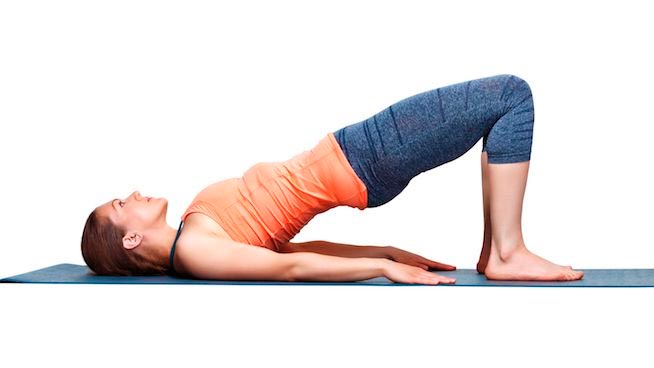
Bridges are a great way to activate and strengthen the upper glutes. To perform a bridge, follow these steps:
- Lie on your back with your knees bent and feet flat on the ground.
- Place your hands on the ground by your sides.
- Lift your hips off the ground while keeping your feet and shoulders on the ground.
- Squeeze your glutes at the top of the movement.
- Lower your hips back down to the ground.
Repeat this movement for 10-12 reps for 3-4 sets.
Clamshells
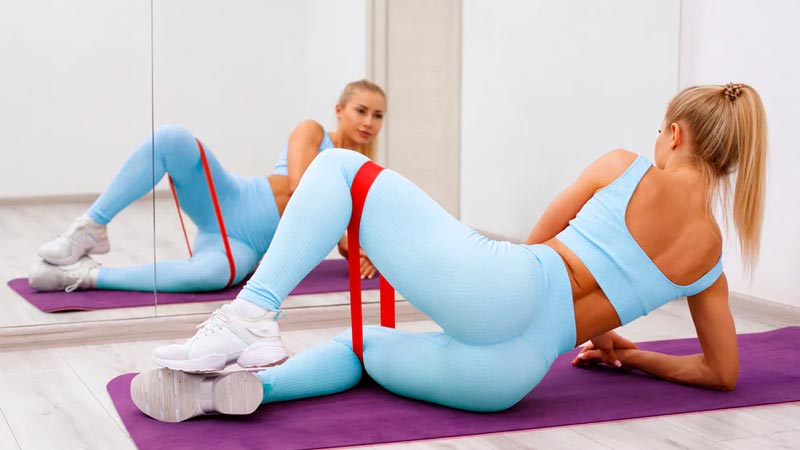
Clamshells are another effective exercise for targeting the upper glutes. Here's how to do them:
- Lie on your side with your legs bent at a 90-degree angle.
- Keep your feet together and lift your top knee away from your bottom knee.
- Pause at the top of the movement and squeeze your glutes.
- Lower your knee back down to the starting position.
Repeat this movement for 10-12 reps for 3-4 sets on each side.
Donkey Kicks
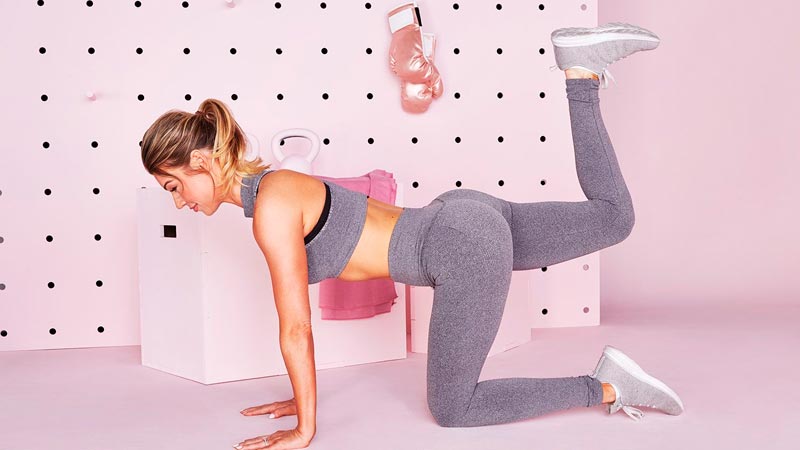
Donkey kicks are a classic exercise that can help strengthen the upper glutes. Here's how to do them:
- Start on your hands and knees with your wrists under your shoulders and your knees under your hips.
- Keeping your knee bent, lift one leg up towards the ceiling.
- Squeeze your glutes at the top of the movement.
- Lower your leg back down to the starting position.
Repeat this movement for 10-12 reps for 3-4 sets on each side.
By incorporating these basic upper glute exercises into your workout routine, you can help strengthen and tone your glutes for improved overall fitness.
Advanced Upper Glute Exercises
Barbell Hip Thrust
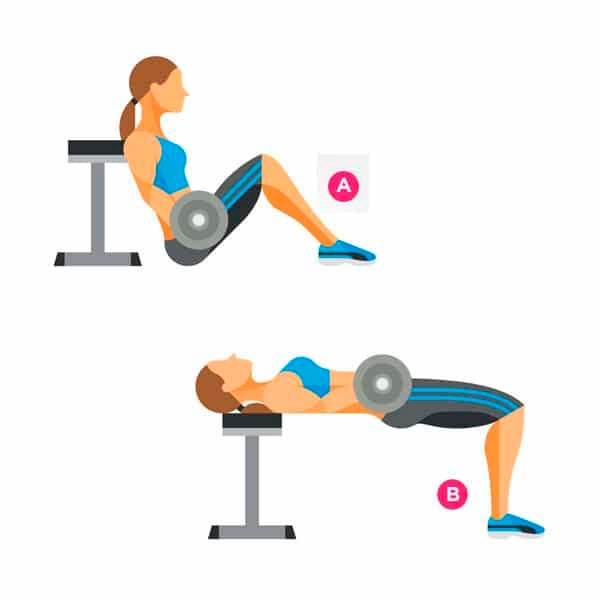
Barbell hip thrust is a great exercise for targeting the upper glutes. It is a compound exercise that involves the glutes, hamstrings, and lower back. To perform this exercise, follow these steps:
- Sit on the ground with your back against a bench and feet flat on the ground.
- Place a barbell across your hips and hold it with both hands.
- Drive through your heels and lift your hips up towards the ceiling.
- Squeeze your glutes at the top of the movement and then lower your hips back down to the starting position.
To make this exercise more challenging, you can add weight to the barbell or use a resistance band around your knees.
Deadlift
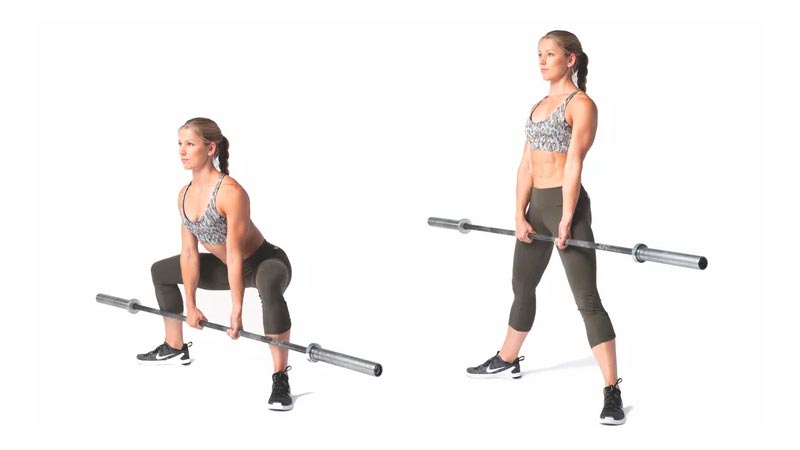
Deadlift is another great exercise that targets the upper glutes. It is a compound exercise that involves the glutes, hamstrings, lower back, and core. To perform this exercise, follow these steps:
- Stand with your feet hip-width apart and the barbell in front of you.
- Bend down and grab the bar with an overhand grip.
- Stand up straight, lifting the bar off the ground.
- Squeeze your glutes at the top of the movement and then lower the bar back down to the ground.
To make this exercise more challenging, you can add weight to the barbell or use a resistance band around your knees.
Squats
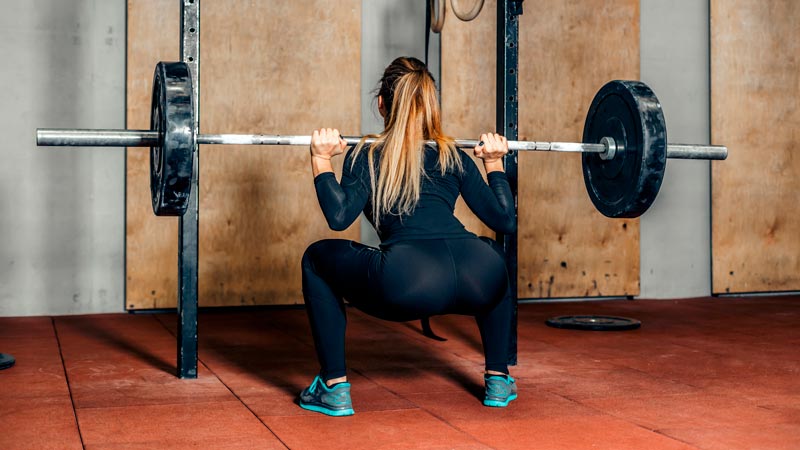
Squats are a classic exercise that targets the entire lower body, including the upper glutes. To perform this exercise, follow these steps:
- Stand with your feet shoulder-width apart and the barbell on your shoulders.
- Bend your knees and lower your hips down towards the ground.
- Keep your back straight and your chest up.
- Push through your heels and stand back up.
To make this exercise more challenging, you can add weight to the barbell or use a resistance band around your knees.
Overall, these advanced upper glute exercises are great for building strength and muscle in the upper glutes. Incorporate these exercises into your workout routine for a well-rounded lower body workout.
Videos of Upper Glute Exercises
Common Mistakes and How to Avoid Them
When it comes to upper glute exercises, there are a few common mistakes that people tend to make. Here are some tips on how to avoid them:
1. Neglecting Proper Form
One of the most common mistakes people make when performing upper glute exercises is neglecting proper form. This can lead to injuries or ineffective workouts. It is important to maintain proper posture throughout the exercise and to engage the glutes fully.
2. Using Too Much Weight
Another mistake people make is using too much weight. This can lead to improper form and can put unnecessary strain on the body. It is important to start with a weight that is comfortable and gradually increase it as strength improves.
3. Not Varying the Exercises
Many people tend to stick to the same upper glute exercises and neglect to vary their routine. This can lead to plateaus in progress and can make workouts feel monotonous. It is important to switch up the exercises and challenge the body in different ways.
4. Focusing Solely on Upper Glutes
While upper glute exercises are important, it is also important to work on the lower glutes and other muscle groups in the lower body. Neglecting these areas can lead to muscle imbalances and can hinder progress.
By avoiding these common mistakes, individuals can ensure they are getting the most out of their upper glute workouts and can achieve their fitness goals more effectively.
Benefits of Regular Upper Glute Exercises
Regular upper glute exercises can provide several benefits, including:
-
Improved Posture: Strengthening the upper glutes can help improve posture by reducing the strain on the lower back muscles. This can help prevent lower back pain and improve overall spinal alignment.
-
Increased Athletic Performance: Strong upper glutes can improve athletic performance by providing stability and power during movements such as running, jumping, and squatting.
-
Enhanced Aesthetic Appearance: Regular upper glute exercises can help shape and tone the glutes, providing a more aesthetically pleasing appearance.
-
Reduced Risk of Injury: Strengthening the upper glutes can also help reduce the risk of injury to the lower back, hips, and knees by improving overall strength and stability in the lower body.
Incorporating regular upper glute exercises into a workout routine can provide numerous benefits for overall health and fitness.
Post-Workout Care
After completing a workout focused on the upper glutes, it is important to take care of your body to prevent injury and promote recovery. Here are a few tips for post-workout care:
Stretching
Stretching after a workout can help reduce muscle soreness and improve flexibility. Focus on stretches that target the glutes, such as a seated figure-four stretch or a standing glute stretch. Hold each stretch for 15-30 seconds and repeat on both sides.
Hydration
Drinking water after a workout is crucial for rehydrating the body and aiding in muscle recovery. Aim to drink at least 8 ounces of water immediately after your workout and continue to drink water throughout the day.
Nutrition
Eating a balanced meal after a workout can help replenish energy stores and promote muscle recovery. Aim to consume a meal that includes carbohydrates, protein, and healthy fats within 30 minutes to an hour after your workout.
Rest
Rest is important for allowing the body to recover and repair after a workout. Aim to get at least 7-8 hours of sleep per night and avoid overtraining the glutes by giving them adequate rest between workouts.
By following these post-workout care tips, you can help prevent injury and promote recovery after a workout focused on the upper glutes.
Conclusion
In conclusion, the upper glutes are a crucial muscle group that should not be neglected in any workout routine. By targeting these muscles, individuals can improve their overall strength, stability, and posture.
There are many exercises that can effectively target the upper glutes, including hip thrusts, glute bridges, and squats. It is important to use proper form and gradually increase weight and resistance to avoid injury and maximize results.
Incorporating upper glute exercises into a well-rounded workout routine can lead to noticeable improvements in both appearance and performance. By consistently challenging and strengthening these muscles, individuals can achieve a more toned and defined lower body.
Overall, the upper glutes are an important muscle group that should not be overlooked. By incorporating targeted exercises into a regular workout routine, individuals can achieve their fitness goals and improve their overall health and well-being.
Stay healthy!
